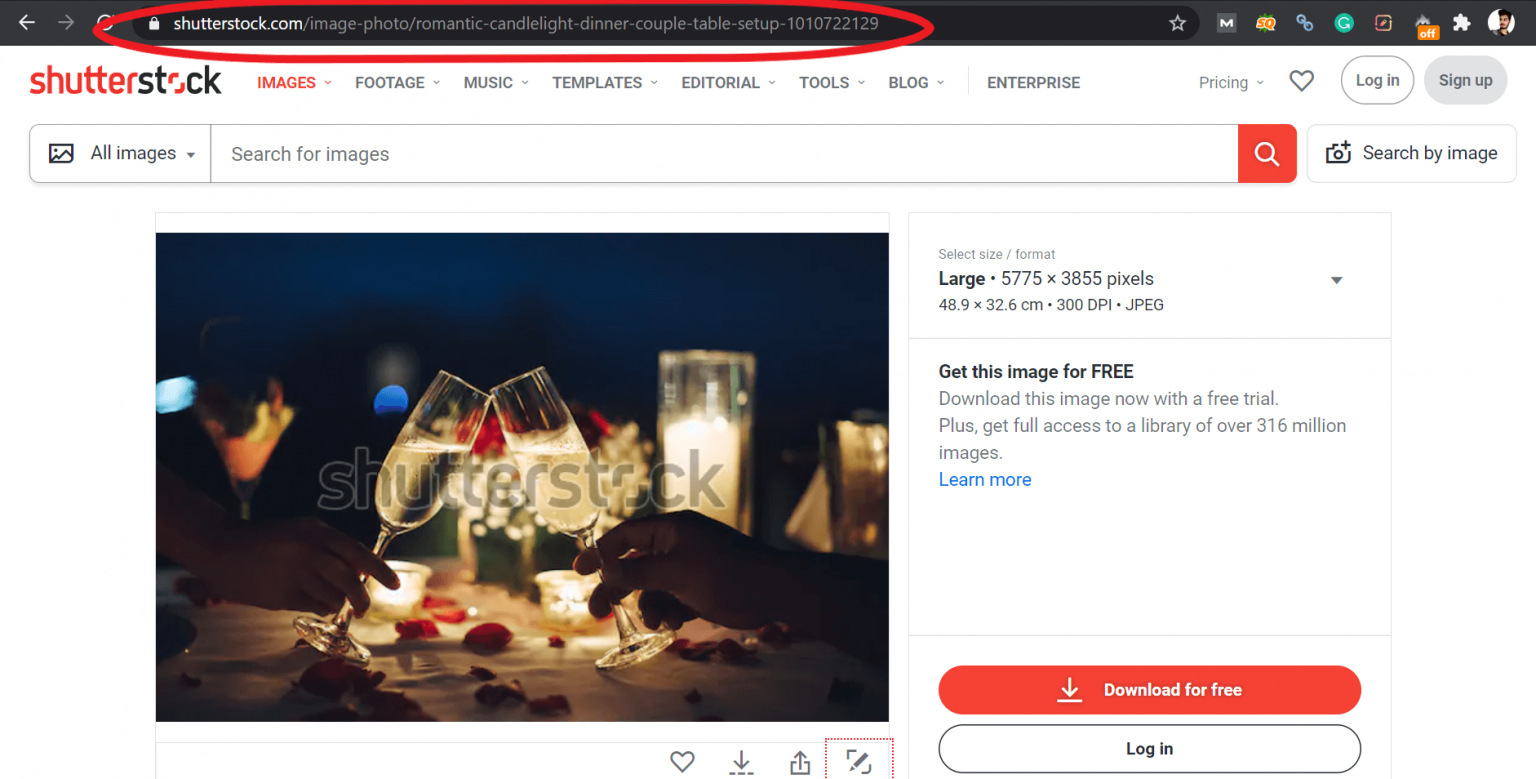If you’re into digital content creation, you’ve probably come across Shutterstock—one of the biggest stock photo platforms out there. It offers a vast library of high-quality images, perfect for websites, presentations, social media, and more. But here’s the catch: when you browse Shutterstock, you see watermarked versions of images. These watermarks are like digital signatures, meant to protect the creators and prevent unauthorized use. They make the images look less appealing but serve a crucial purpose: ensuring that only those who pay for the license can access the full, watermark-free version. So, how do you get around this in 2025? Let’s dive in!
Understanding the Importance of Licensed and Watermark-Free Images
Using images without proper licensing can lead to big trouble—legal issues, fines, or even damage to your reputation. That’s why understanding the significance of licensed, watermark-free images is so important. When you purchase or license an image legally, you’re respecting the creator’s rights, and you gain access to high-resolution, unbranded versions that are safe to use across any platform. These images are often more professional-looking and help your content appear polished and trustworthy.
Here’s why licensed and watermark-free images matter:
- Legal Safety: Using unlicensed images can result in copyright infringement claims. Proper licensing ensures you’re on the right side of the law.
- Quality Assurance: Licensed images are usually higher resolution and better quality, ensuring your project looks professional.
- Brand Integrity: Watermark-free images help maintain a clean, consistent look that aligns with your brand’s standards.
- Access to Full Features: Only licensed images give you the rights to modify, distribute, or use the images commercially without restrictions.
While it might seem tempting to look for shortcuts or free ways to get Shutterstock images without watermarks, the risks far outweigh the benefits. Instead, understanding why licensing matters will help you make smarter choices and avoid potential legal headaches down the road. In the following sections, we’ll explore legitimate ways to access these images in 2025, ensuring you stay compliant and enjoy the best quality for your projects.
Legal Ways to Access Shutterstock Images Without Watermarks
So, you’re eager to get high-quality Shutterstock images without those annoying watermarks, but you want to make sure you’re playing by the rules, right? No worries — there are legitimate ways to do this that respect copyright laws and support the creators behind those beautiful images.
First things first: always opt for official channels. Shutterstock offers several options that allow you to access images legally and without watermarks, whether you’re a casual user or a professional designer.
Here are the primary legal methods:
- Subscribe to a Shutterstock plan: This is the most straightforward option. When you subscribe, you get access to a set number of images per month or per year, and the images you download are in full quality without watermarks.
- Purchase image packs or credits: If you don’t want a subscription, you can buy credits or packs. These credits can be used to license individual images, which will then be available for download in high resolution without watermarks.
- Use Shutterstock’s free images: Occasionally, Shutterstock offers free images or free trials. These downloads are usually watermark-free, but be sure to check the licensing terms attached.
- Leverage Shutterstock API (for developers or businesses): If you have a business or app that needs images, Shutterstock’s API allows for legal integration and access to watermarked images for preview purposes, with full licensing available upon purchase.
Another tip: always read the licensing agreements. Shutterstock’s licenses grant you legal rights to use the images in specific ways, so understanding the terms helps you avoid potential copyright issues. Remember, downloading images from unofficial sources or using unauthorized tools to remove watermarks is illegal and can lead to serious legal trouble.
In summary, the safest and most ethical way to access Shutterstock images without watermarks is to use their official licensing options — whether through subscriptions, credits, or free offerings. It not only keeps you compliant but also supports the talented photographers and artists behind those stunning visuals.
How to Purchase and Download Official Shutterstock Images
Ready to get your hands on those high-quality, watermark-free Shutterstock images? Here’s a simple, step-by-step guide to help you purchase and download images the right way:
- Create an account: Head over to Shutterstock’s website and sign up. It’s quick and free to join. Having an account makes managing your licenses and downloads much easier.
- Choose your licensing option: Decide whether a subscription or a credit pack suits your needs best. Subscriptions are great if you need lots of images regularly, while credit packs work well for occasional use.
- Search for your images: Use the search bar to find images relevant to your project. You can filter results by orientation, color, size, and more to narrow down your choices.
- Select your image: Once you find the perfect image, click on it to see the licensing options. Make sure to review the image resolution and licensing terms to ensure it meets your requirements.
- Add to cart: Click the “Add to cart” button. You can continue browsing and adding more images if needed.
- Proceed to checkout: When you’re ready, go to your cart and review your selections. Confirm the licenses and total cost.
- Complete your payment: Enter your payment details. Shutterstock accepts various payment methods, making it convenient.
- Download your image: After payment, you’ll get access to a download link. Click it to download your image in high resolution, free of watermarks.
Once downloaded, you can use the images according to the license you purchased — whether for commercial projects, personal use, or other purposes. Remember, keep a copy of your license and purchase confirmation just in case you need proof of legal use later on.
And that’s it! Buying and downloading Shutterstock images officially not only ensures you’re on the right side of copyright law but also gives you access to the best quality images for your creative projects. Happy designing!
Alternative Methods for Accessing Watermark-Free Images Legally
Looking for ways to get high-quality, watermark-free images without breaking the bank? You’re not alone! While Shutterstock’s standard way is through purchasing or subscribing, there are several legitimate options to access images legally and ethically.
1. Shutterstock Free Trial
Did you know Shutterstock often offers free trial periods? During these trials, you can download a limited number of images without watermarks. It’s a great way to access premium images temporarily, especially if you need them for a short-term project or just want to evaluate the quality.
2. Shutterstock Contributor Program
If you’re a photographer or designer, consider joining the Shutterstock Contributor Program. You can upload your own images and earn royalties when others download them. As a contributor, you also gain access to a selection of images for personal use, which are free of watermarks. Plus, it’s a fantastic way to monetize your work!
3. Stock Image Subscription Services
- Other platforms like Adobe Stock, iStock, and Unsplash offer subscription plans or free images.
- Some sites provide free, high-resolution images with no watermarks, especially if you credit the creator.
- Always check the licensing terms to ensure you’re using images legally.
4. Creative Commons Licensed Images
Websites like Creative Commons or Unsplash host images that are free to use under specific licenses. Many images are available for commercial use without attribution, but always double-check the license details to stay compliant.
5. Direct Licensing from Photographers
Some photographers sell images directly through their websites or social media platforms. This can be a cost-effective way to obtain unique, high-quality images legally. Just make sure to clarify licensing rights before downloading or using the images.
Tips for Using Shutterstock Images Responsibly and Ethically
Using Shutterstock images responsibly isn’t just about following the law—it’s also about respecting creators and maintaining professional integrity. Here are some tips to help you stay on the right side of ethical image use:
- Always Read the License Agreement: Before downloading or using an image, carefully review the licensing terms. Standard licenses typically allow most uses, but extended licenses may be needed for specific applications.
- Give Proper Credit When Required: Some images, especially those under Creative Commons licenses, require attribution. Make sure to credit the photographer or platform as specified.
- Avoid Altering or Misrepresenting Images: Do not manipulate images in a way that misleads or falsely represents the subject. Respect the integrity of the original content.
- Use Images in Appropriate Contexts: Think about the message your image conveys. Avoid using images in ways that could be considered offensive, defamatory, or harmful.
- Maintain a Record of Licenses: Keep documentation of your licenses or permissions for each image you use. This can protect you in case of legal questions later on.
- Support Creators: Whenever possible, purchase images or subscribe to platforms like Shutterstock to compensate photographers for their work. Ethical use supports a healthy creative community.
Remember, using images responsibly not only keeps you legally protected but also shows respect for the artists and photographers who dedicate their time and talent to creating beautiful visuals. By following these tips, you can ensure your projects are both professional and ethically sound.
Conclusion and Best Practices for Using Shutterstock Images in 2025
In 2025, leveraging Shutterstock images effectively requires a clear understanding of licensing options and ethical considerations. Always ensure you acquire the appropriate license to avoid legal issues and uphold content integrity. Using images without proper licensing can lead to copyright infringement, which may result in fines or content removal.
To maximize the benefits of Shutterstock images while adhering to best practices, consider the following:
- Purchase the correct license: Choose between standard or enhanced licenses based on your project scope.
- Download high-resolution images: This ensures your visuals remain crisp across various platforms and formats.
- Credit attribution: While Shutterstock generally doesn’t require attribution, check licensing terms for specific images that might have additional requirements.
- Use images ethically: Avoid manipulations that could misrepresent or distort the original content.
- Maintain organized records: Keep track of licenses and purchase receipts for future reference or legal verification.
| Best Practice | Benefit |
|---|---|
| Always purchase legitimate licenses | Ensures legal use and access to high-quality images |
| Use images responsibly and ethically | Builds trust with your audience and avoids legal repercussions |
| Keep detailed records of licenses | Facilitates easy management and proof of rights |
In summary, adhering to these best practices will help you utilize Shutterstock images effectively and ethically in 2025, safeguarding your projects and reputation while maximizing visual impact.



